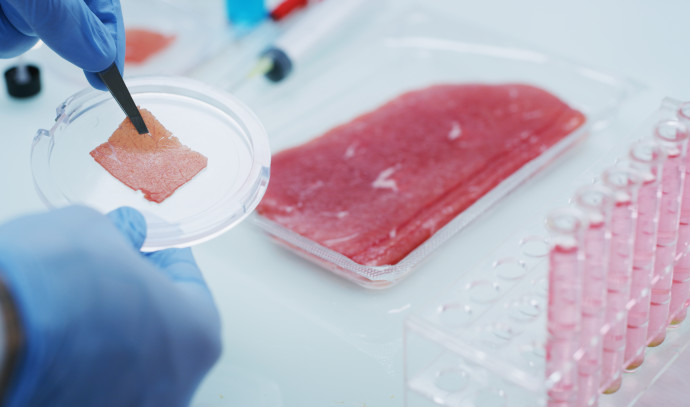Profuse Technology, a frontrunner in the field of muscle tissue growth, has recently made significant strides that could have far-reaching implications for the cultivated meat and life-science sectors. The company’s latest developments have led to an impressive 80% reduction in the time required for muscle growth, achieving maturity in just 48 hours. This acceleration not only quickens the growth process but also enhances the protein content of muscle tissue by a factor of five, providing a healthier and more protein-rich alternative to traditional meat sources.
Traditional cell cultures are typically grown in a flat, two-dimensional environment (2D). In contrast, 3D growth methodologies involve creating a three-dimensional environment where cells can interact and grow in a more realistic and physiologically relevant manner. This approach aims to mimic the complex structure of natural tissues and organs, allowing cells to develop and mature in a manner that closely resembles their behavior in a living organism.
In the context of muscle tissue production, 3D growth methodologies involve providing an environment where muscle cells can form intricate three-dimensional structures, similar to the muscle fibers found in traditional meat. This method enables the development of muscle tissue that not only grows faster but also exhibits characteristics more akin to natural muscle.
By utilizing 3D growth, Profuse Technology is able to create fully mature muscle tissue within a three-dimensional environment, closely resembling conventionally farmed meat. This approach has the potential to usher in a new era in cultivated meat production, aiming to produce an end product that is nearly indistinguishable from conventionally sourced meat in terms of both taste and texture.
more muscle, more meat
Guy Nevo Michrowski, CEO of Profuse, highlighted the critical role of muscle growth in meat production, highlighting two major factors: scaffolds and microcarriers.
Scaffolds are supportive structures or frameworks made from biocompatible materials. They serve as a foundation for cells to attach to and grow upon in three dimensions. In muscle tissue production, scaffolds are designed to mimic the extracellular matrix found in living organisms.
Microcarriers are small particles that can be suspended in a culture medium. They provide a surface for cells to attach and grow within a bioreactor or culture vessel, and are particularly useful when working with large-scale cell cultures, as they increase the surface area available for cell attachment and can enhance the efficiency of nutrient exchange. In the context of muscle tissue production, microcarriers can be engineered to support the growth and organization of muscle cells within a 3D environment.
“The ability to cultivate meat cost-effectively and at scale hinges on adopting 3D growth methodologies involving scaffolds and microcarriers,” Michrowski said. “It is essential to recognize that the heart of meat production lies in muscle growth, as meat equals muscle.”
Dr. Tamar Eigler Hirsh, CTO of Profuse, added that the company’s “proprietary supplements and protocols achieve effective production in a 3D environment without resorting to genetic modification or any undesirable elements.”
“Our commitment lies in providing sustainable, ethical, and delectable alternatives to conventionally farmed meat,” she added.



